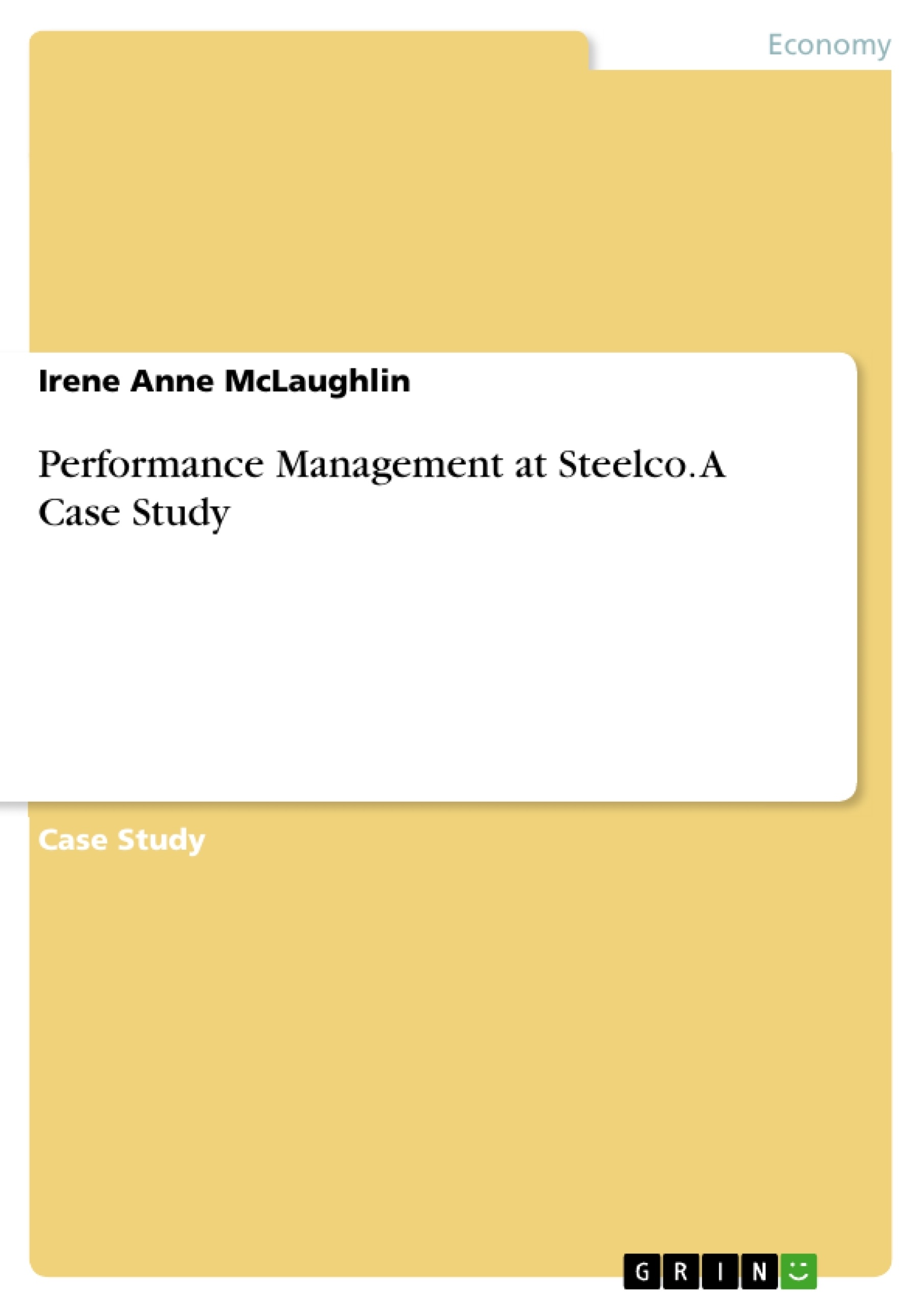This text is a case study of the fictive enterprise “Steelco”. It gives an example of performance management properly applied.
Performance management is the achievement of performance targets through the effective management of people and the environment in which they operate. Performance management permeates the organization and directly impacts on business results. It is both a strategic issues and a tactical issue.
Contents
1. Introduction
2. Issue 1: Structuring individual performance targets to maximise the firm's performance
3. Issue 2: How a performance management system can be used to improve employee development/communications
4. Issue 3: Need to integrate performance management systems with other human resource processes
5. Issue 4: Effectiveness of linking performance to financial reward
6. References
1. Introduction
Steelco is a 30-year-old Small Medium Enterprise (SME) operating in a highly competitive industry due to cheaper offshore manufacturing. For SMEs, the adoption of advanced innovative managerial practices is key to the successful improvement of performance and competitiveness (Cagliano, et al., pp 469-482 2001).
Steelco’s trading conditions have been difficult, and poor financial performance in recent years has resulted in cost saving strategies operating under hard Human Resource Management (HRM). The following organisation chart delineates the hierarchy and the recruitment of the Divisional Director (DD), appointed 12 months ago to manage The Works (TW), reporting directly to the Owner Manager (OM).
Steelco Hierarchy Chart
Abbildung in dieser Leseprobe nicht enthalten
Figure 1 Steelco Hierarchy Chart
The OM manages with an autocratic (command and control) style. He has imposed a pay freeze over the last three years and combined with poor terms and conditions the employees are discontented and lack motivation. The DD (a participative manager operating soft HRM) introduced initiatives over the last 12 months with zero results. There has been a breach in the psychological contract and perceptions of both parties concerning the relationship, and obligations need addressing (Guest & Conway, pp 22-38 2002). The OM does not want to invest in the employees, and there is a lack of alignment; planning; links to performance/outcomes; holistic links; training/development; upskilling; and formal systems.
The firm’s survival is questionable, without necessary investment in technology, staff development, and innovation. The employees remain disappointed and frustrated despite the new team led initiatives and employee forum. It suggests that TW do as much as they need to do to comply with requirements posted on the board weekly. However, the organisational issues are wider than this, as unclear targets including sales mean that the bonuses are paid without the requisite turnover. The bonus is unattractive, and promotions (unilaterally appointed team leaders) are made without increment. The employees do not know the medium/long term strategy of the business as weekly targets are devised for TW by the DD based on perceived requirements rather than strategic goals.
2. Issue 1: Structuring individual performance targets to maximise the firm's performance
Performance management is the achievement of performance targets through the effective management of people and the environment in which they operate. Performance management permeates the organisation and directly impacts on business results. It is both a strategic issue and a tactical issue(CQI, 2015 D/A March 15 2015).
The process for Steelco needs to start with immediate vertical integration and alignment of the business strategy, team and individual targets with key skillsets. This requires vision development, mission and values and the definition of business goals and objectives both at the corporate and individual or team level (Bititci, pp 1325-1350 2006). In Steelco, the goal of competitive advantage (by cost reduction or innovation) is essential and developed with the employees’ involvement and agreement ensuring engagement on SMART (Specific, Measurable, Attainable, Relevant and Timely) goals. Teams (via fairly appointed representatives) and individuals should influence the firm’s annual corporate, team, and individual goals enforcing a strong psychological contract. Teams need to become accountable monitoring their own and individual members’ performance, with the organisation’s strategy and vision to be explained and understood by everyone in the business.
[...]
- Quote paper
- Irene Anne McLaughlin (Author), 2015, Performance Management at Steelco. A Case Study, Munich, GRIN Verlag, https://www.grin.com/document/336020
-

-

-

-
Upload your own papers! Earn money and win an iPhone X. -

-
Upload your own papers! Earn money and win an iPhone X. -

-
Upload your own papers! Earn money and win an iPhone X. -

-
Upload your own papers! Earn money and win an iPhone X. -

-
Upload your own papers! Earn money and win an iPhone X.

